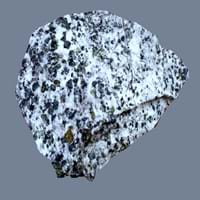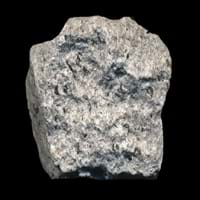Definition
Carbonatite is intrusive or extrusive igneous rock which is defined by mineralogic composition, consisting of greater than 50 percent carbonate minerals
Porphyry is a reddish-brown to purple igneous rock containing large phenocrysts of various minerals embedded in a fine-grained matrix
Discoverer
Unknown
Unknown
Etymology
From any intrusive igneous rock, having a majority of carbonate minerals
From Old French porfire, from Italian porfiro and in some cases directly from Latin porphyrites
Class
Igneous Rocks
Igneous Rocks
Sub-Class
Durable Rock, Soft Rock
Durable Rock, Hard Rock
Other Categories
Coarse Grained Rock, Fine Grained Rock, Medium Grained Rock, Opaque Rock
Fine Grained Rock, Opaque Rock
Texture
Granular, Poikiloblastic
Porphyritic
Color
Black, Brown, Colourless, Green, Grey, Pink, White
Black, Brown, Colourless, Green, Grey, Red, Rust, White
Durability
Durable
Durable
Appearance
Dull, Banded and Foilated
Dull
Interior Uses
Decorative Aggregates, Interior Decoration
Decorative Aggregates, Interior Decoration
Exterior Uses
As Facing Stone, Garden Decoration
Garden Decoration, Paving Stone
Other Architectural Uses
Curbing
Curbing
Construction Industry
As a Flux in the Production of Steel and Pig Iron, As a Sintering Agent in Steel Industry to process Iron Ore, As Dimension Stone, Cement Manufacture, for Road Aggregate, Making natural cement, Manufacture of Magnesium and Dolomite Refractories, Unknown, Unknown
Construction Aggregate
Medical Industry
Taken as a Supplement for Calcium or Magnesium
Not Yet Used
Antiquity Uses
Artifacts
Artifacts, Monuments, Sculpture
Commercial Uses
An Oil and Gas Reservoir, As a Feed Additive for Livestock, Gemstone, Metallurgical Flux
Creating Artwork, Gemstone, Jewelry
Types
Not Available
Rhomb Porphyry
Features
Available in lots of colors, Generally rough to touch, Is one of the oldest rock
Generally rough to touch, Is one of the oldest rock, Surfaces are often shiny
Archaeological Significance
Monuments
Not Yet Used
Used
Famous Monuments
Not Applicable
Data Not Available
Sculpture
Not Yet Used
Used
Famous Sculptures
Not Applicable
Data Not Available
Pictographs
Used
Not Used
Petroglyphs
Used
Not Used
Figurines
Not Yet Used
Used
Formation
Carbonatites are intrusive or extrusive igneous rocks which are defined by mineralogic composition consisting of greater than 50 percent carbonate minerals and are formed due to low degrees of partial melting of rocks.
Porphyry is formed in two stages: the magma cools slowly deep within the crust or the magma is cools rapidly as it erupts from a volcano, creating small grains that are usually invisible to naked eye.
Mineral Content
Ancylite, Apatite, Barite, Fluorite, Magnetite, Natrolite, Sodalite
Biotite, Chert, Feldspar, Garnet, Graphite, Quartz, Silica
Compound Content
CaO, Carbon Dioxide, Sodium Oxide
Aluminium Oxide, CaO, Iron(III) Oxide, Potassium Oxide, MgO, Sodium Oxide, Silicon Dioxide, Titanium Dioxide
Types of Metamorphism
Burial Metamorphism, Contact Metamorphism
Burial Metamorphism, Cataclastic Metamorphism, Contact Metamorphism, Hydrothermal Metamorphism, Impact Metamorphism, Regional Metamorphism
Types of Weathering
Biological Weathering, Chemical Weathering, Mechanical Weathering
Biological Weathering, Chemical Weathering, Not Registered
Types of Erosion
Chemical Erosion, Wind Erosion
Chemical Erosion, Coastal Erosion, Glacier Erosion
Grain Size
Medium to Fine Coarse Grained
Fine Grained
Fracture
Conchoidal
Irregular
Porosity
Less Porous
Less Porous
Luster
Subvitreous to Dull
Dull
Cleavage
Not Available
Imperfect
Specific Gravity
2.86-2.87
2.5-4
Transparency
Opaque
Translucent to Opaque
Density
2.84-2.86 g/cm3
2.5-2.52 g/cm3
Resistance
Heat Resistant, Pressure Resistant, Water Resistant
Heat Resistant, Impact Resistant
Deposits in Eastern Continents
Asia
China, India, Kazakhstan, Mongolia, Russia, Uzbekistan
China, Kazakhstan, South Korea, Thailand, Turkey, Vietnam
Africa
Namibia, Nigeria, South Africa
Egypt, Ethiopia, Ghana, South Africa
Europe
Austria, Denmark, Germany, Great Britain, Netherlands, Norway, Poland, Sweden, Switzerland, United Kingdom
Finland, France, Germany, Great Britain, Hungary, Iceland, Ireland, Italy, Netherlands, Norway, Romania, Sweden, Switzerland
Others
Greenland
Greenland
Deposits in Western Continents
North America
Canada, USA
Canada, Cuba, Jamaica, USA
South America
Brazil
Bolivia, Brazil, Colombia, Ecuador, Paraguay
Deposits in Oceania Continent
Australia
New South Wales, New Zealand
New South Wales, New Zealand, Western Australia
Carbonatite vs Porphyry Characteristics
Though some rocks look identical, they have certain characteristics which distinguish them from others. Characteristics of rocks include texture, appearance, color, fracture, streak, hardness etc. Carbonatite vs Porphyry characteristics assist us to distinguish and recognize rocks. Also you can check about Properties of Carbonatite and Properties of Porphyry. Learn more about Carbonatite vs Porphyry in the next section. The interior uses of Carbonatite include Decorative aggregates and Interior decoration whereas the interior uses of Porphyry include Decorative aggregates and Interior decoration. Due to some exceptional properties of Carbonatite and Porphyry, they have various applications in construction industry. The uses of Carbonatite in construction industry include As a flux in the production of steel and pig iron, As a sintering agent in steel industry to process iron ore, As dimension stone, Cement manufacture, For road aggregate, Making natural cement, Manufacture of magnesium and dolomite refractories, Unknown, Unknown and that of Porphyry include Construction aggregate.
More about Carbonatite and Porphyry
Here you can know more about Carbonatite and Porphyry. The life cycle of a rock consists of formation of rock, composition of rock and transformation of rock. The composition of Carbonatite and Porphyry consists of mineral content and compound content. The mineral content of Carbonatite includes Ancylite, Apatite, Barite, Fluorite, Magnetite, Natrolite, Sodalite and mineral content of Porphyry includes Biotite, Chert, Feldspar, Garnet, Graphite, Quartz, Silica. You can also check out the list of all Igneous Rocks. When we have to compare Carbonatite vs Porphyry, the texture, color and appearance plays an important role in determining the type of rock. Carbonatite is available in black, brown, colourless, green, grey, pink, white colors whereas, Porphyry is available in black, brown, colourless, green, grey, red, rust, white colors. Appearance of Carbonatite is Dull, Banded and Foilated and that of Porphyry is Dull. Properties of rock is another aspect for Carbonatite vs Porphyry. The hardness of Carbonatite is 3 and that of Porphyry is 6-7. The types of Carbonatite are Not Available whereas types of Porphyry are Rhomb Porphyry. Streak of rock is the color of powder produced when it is dragged across an unweathered surface. The streak of Carbonatite and Porphyry is white. The specific heat capacity of Carbonatite is Not Available and that of Porphyry is Not Available. Depending on the properties like hardness, toughness, specific heat capacity, porosity etc., rocks are resistant to heat, wear, impact, etc.Carbonatite is heat resistant, pressure resistant, water resistant whereas Porphyry is heat resistant, impact resistant.





